This is a giggable LP tribute that's also a strong platform for electronics upgrades. I've ended up with 2 of these: #1 is a 2018 (blackwood fretboard) Honeyburst model, ordered new from Thomann. # 2 is a slightly earlier (rosewood fretboard) Vintage Burst, bought used from my guitar tech's store.
Here are my actual ratings, on a scale of 5. I'll average the 2 guitars, to provide a random sample of what you're likely to receive. Overall, my experience seems consistent with other reviewers':
5 for value and tone, especially at this price.
4.5 to 5 for design, basic build quality, and playability.
5++ for Thomann's responsiveness and service.
1.5 to 4.5 (yes, very wide range) for cosmetics and finish.
1.5 for quality control (QC).
The SC450+ is an affordable (obviously) LP copy that follows the classic vintage recipe, while adding some clever innovations.
The low price, iffy QC, and value are all real, and all share the same source: Thomann contracts directly with a factory in China, eliminating a wholesaler. So, for about half the price of (e.g.) an Epiphone LP, you get a vintage build recipe, better materials and components, and better ergonomics. You also get a combination of deep '50s neck, flush modern heel, and nice color schemes ? a combination that Gibson won't sell you at any price.
PRO'S:
The flush neck heel is brilliantly designed to solve the traditional LP problem of upper-fret access. Up to the 20th fret, access here is actually easier than on a Strat (because the heel is so sculpted). Up to the 22nd fret, it's still pretty easy. Better access than on a PRS Singlecut (SC/SE 245, etc.). Which is why I chose this.
The Roswell alnico 5 bridge pickup is wonderful. I swapped it for a Gibson Super '57 on my first SC450+, then found I missed it. (This is why I've kept my 2nd copy stock.) This pickup is bright without shrillness, and has body with no nasal honk. Surprisingly great tones, ranging from Allman Brothers to twang.
Split-coil sounds are very usable.
Full maple cap under the flame-maple veneer. (You can see the maple in the treble-side cutaway.)
Long-tenon neck joint, reputedly. (I haven't checked this, but the expected rich tone is definitely there.)
Weight is reasonable, around 9 lbs.
CON'S:
Cosmetic flaws are common (read on, and see other reviews).
Mahogany back on your copy might be anywhere from 2?4 pieces. (I've heard of, but not seen, 5. Mine are, respectively, 2 and 3 pieces.)
3-piece neck, counting a scarf joint and butt joint. (But this construction doesn't seem to degrade the tone.)
Neck binding runs fatter than Gibson spec, and looks plasticky.
NEUTRAL:
The Roswell neck pickup is punchy and entirely giggable, but a bit blunt. It's not muddy ? more like middy. Doesn't have the articulation of a good Gibson, PRS, or even Epi neck pickup. Fast attack from the alnico 5, which you might like for some styles.
Blackwood has replaced rosewood fretboards, to meet CITES export restrictions. Tonally, it's supposed to be very similar. But blackwood can have pronounced grain/color variations, which you might find either interesting or distracting. It also has an unusual feel, which takes a while to get used to: Strings slide around on it. If you've ever tried Ernie Ball's slippery Cobalt strings, regular strings feel like that on blackwood.
The fat neck binding on my Honeyburst copy developed some tiny cracks. I actually like the resulting, slightly distressed look. (Because I don't like plastic binding at all. I'd love a Harley Benton that omitted neck binding, as some LP Studio Deluxes and PRS Singlecuts/SC's do.)
By ordering one of these, you're taking a chance: You'll get a boxed copy that hasn't been inspected in Germany. Shipping to you is very inexpensive, because Thomann subsidizes it. Overseas return shipping is expensive. My experience has been that if you get a copy with problems, Thomann will offer you reasonable options for resolving it.
Here's what I actually got:
My Honeyburst copy sounds righteously full, and has great playability. (Low action with no buzzes.) The top has a pretty, faded-cherryburst finish, on a lightly flamed maple veneer. The back is 3-piece, cut so that the neck fits entirely into the middle piece. Both the back and neck are natural-finished mahogany, with faint grain. Setup was reasonably low and quite buzz-free, straight out of the box.
Problems? There's a sizable spraying blotch under the top's pretty finish, south of the bridge. There's another spraying blotch in the cutaway (which no one but me will see.) The blackwood fretboard has some pronounced color variations, fading to nearly bleached in some places. (The fretboard doesn't look at all bad, just unusual.) The neck binding is fat and also a bit uneven in width, tapering wider toward the upper frets. As mentioned above, it cracked slightly since arriving.
Thomann asked me to email them photos of the build flaws, then offered me the option of keeping the guitar for a partial refund. After staring at the guitar for a few days (and of course listening to it), I decided I could live with the cosmetic flaws, and took this option. I've since upgraded its pickups to a Gibson 57 Classic and Super '57. The guitar sounds nice, plays well, and has held stable action and tuning.
(Side notes: Thomann was outstandingly responsive, courteous, and helpful in resolving the cosmetic glitches, and also with an apparent wiring glitch that turned out to be a false alarm. I actually can't say enough good things about their customer service, and their English is better than most North Americans'. Also, the gummy coil-tap stickers that bothered some earlier SC450+ reviewers are gone. These are now PET stickers, which peel off easily and cleanly.)
My second SC450+ has a Vintage Burst top finish (2-color tobacco burst), over a lightly flamed veneer. Very elegant and classic look. One tiny blemish on the top, not sure if that's from the factory or the prior owner.
This copy also has a natural-finished mahogany back, but with nicely deep grain swirls. The back is 2 symmetrical pieces. (Unlike Epiphone/Gibson, Thomann doesn't veneer over back joins, so you can clearly see how many pieces are involved.)
As an older model, it's got a rosewood fretboard, with light grain and no cosmetic flaws. Same thick neck binding.
This copy required some setup to shake out some fret buzz. But I bought it used, so I can't blame Thomann for how its original owner adjusted or stored it. It set up fine, now plays well, and sounds robust and punchy with its stock pickups.
To sum up: You take pot luck when you order one of these, given the spotty QC. You might get anything from a near-perfect gem to a solid guitar with obvious cosmetic flaws. I can't say that you can't go wrong. But Thomann seems determined to ensure that you'll end up happy ? variously with a great guitar, a great deal, or a return. I'm doubly happy with two of them.



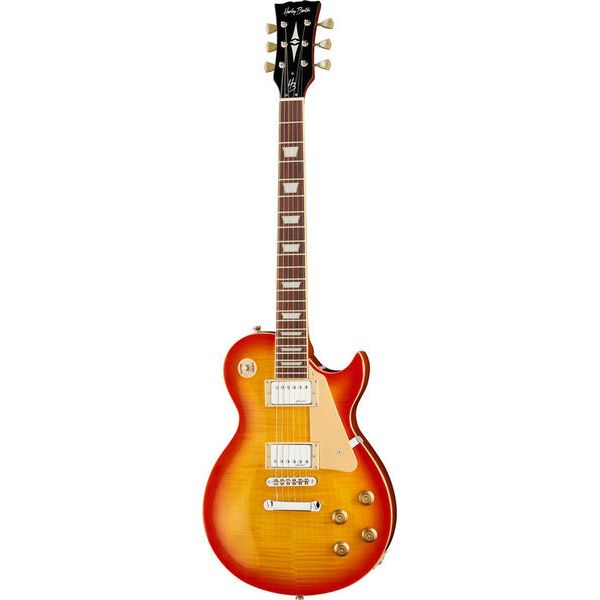
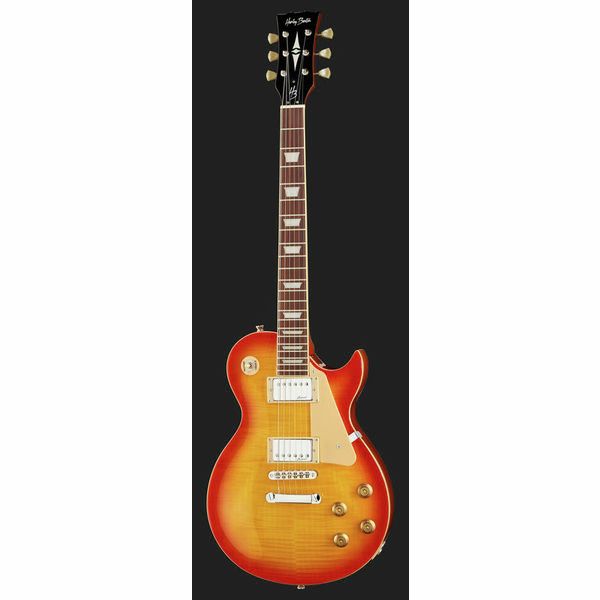
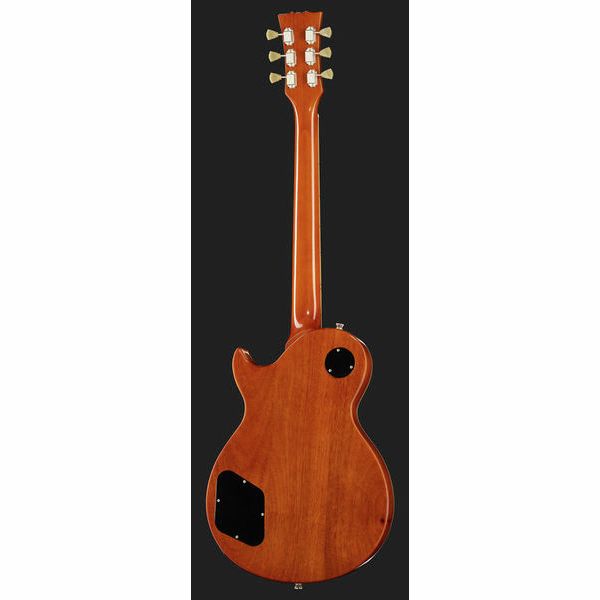
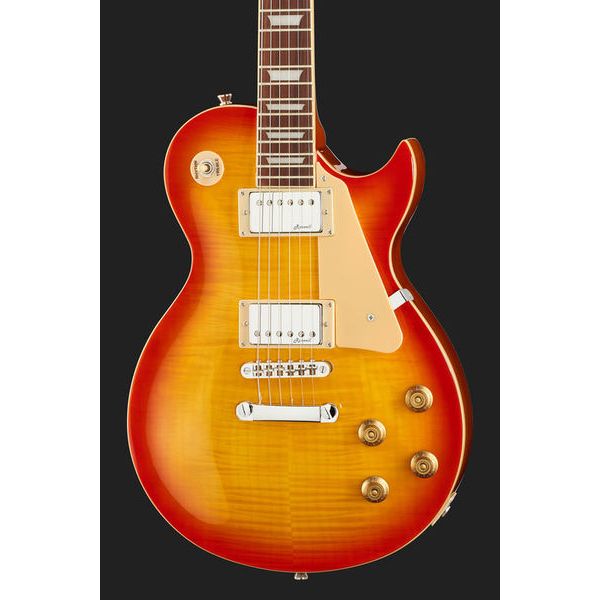
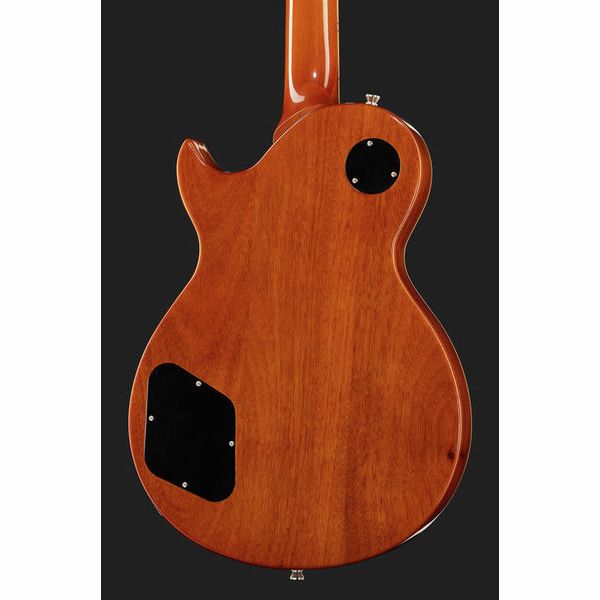
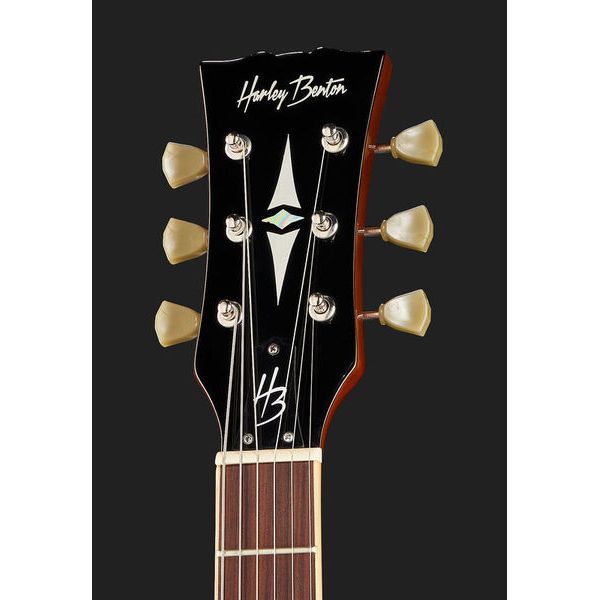
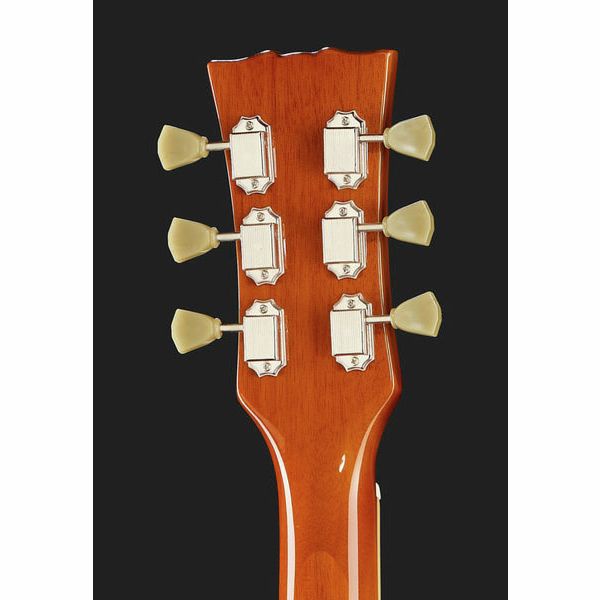
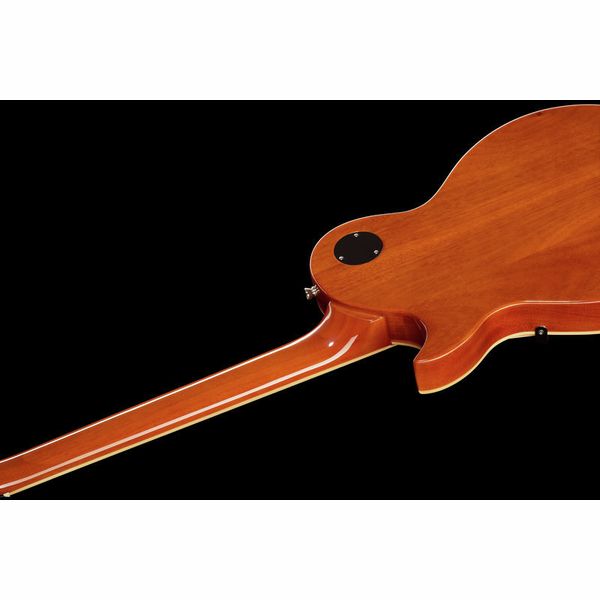
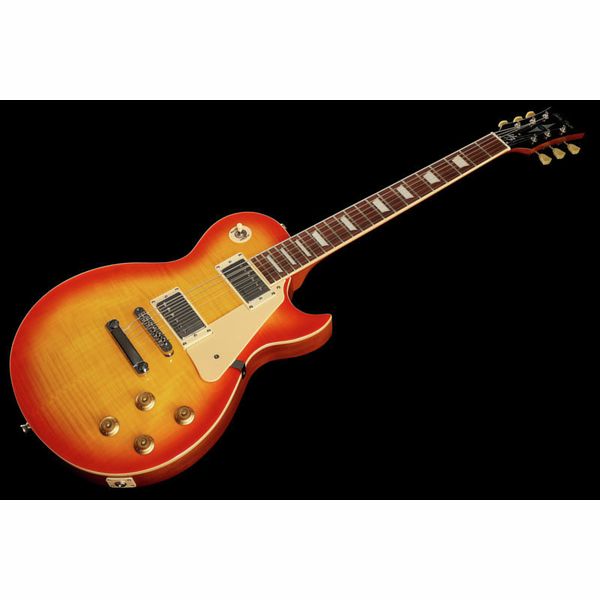
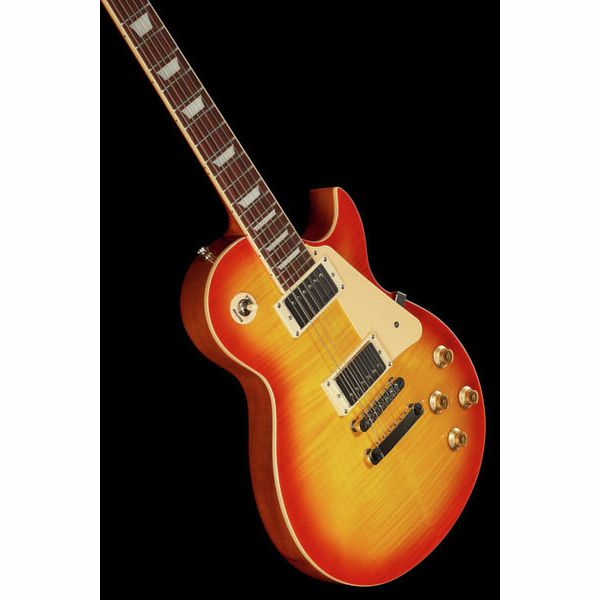
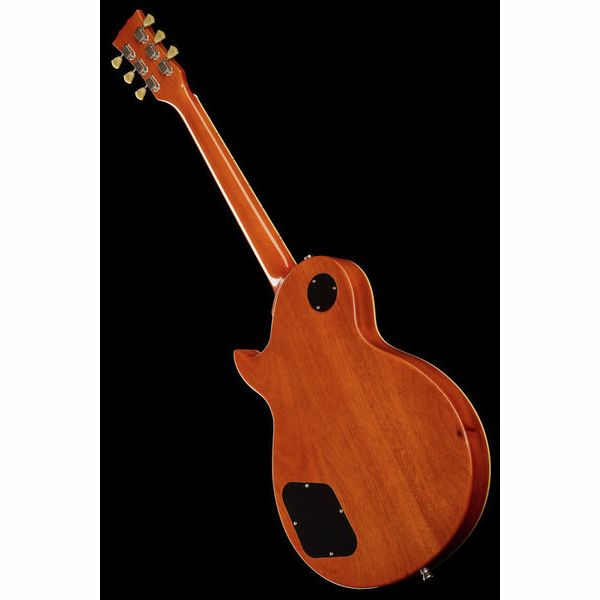
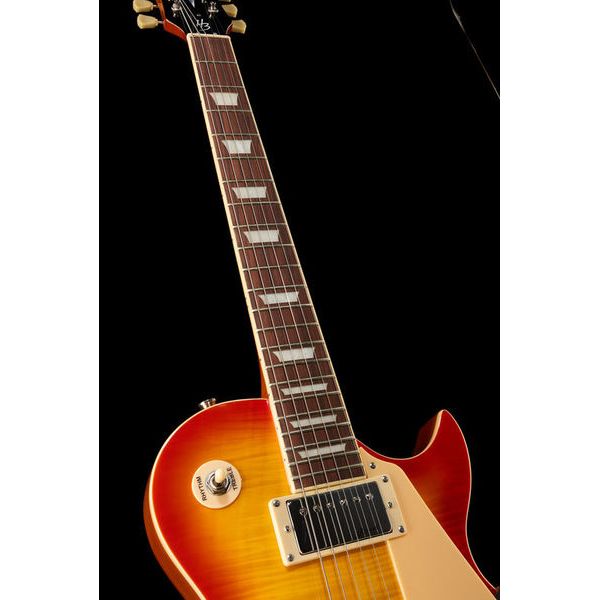
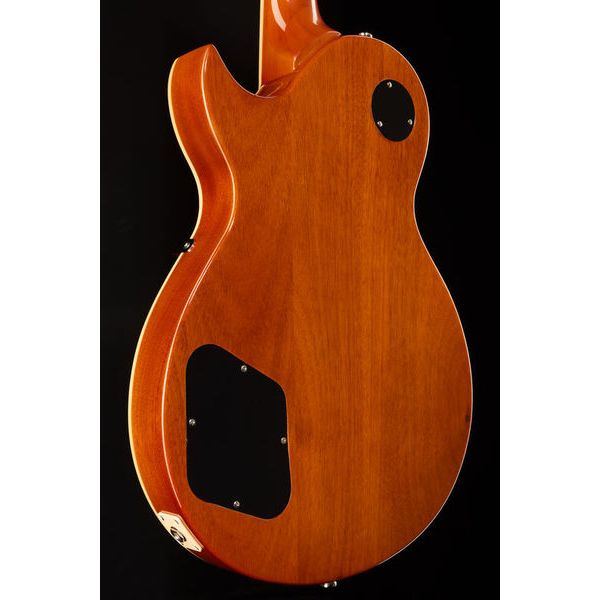
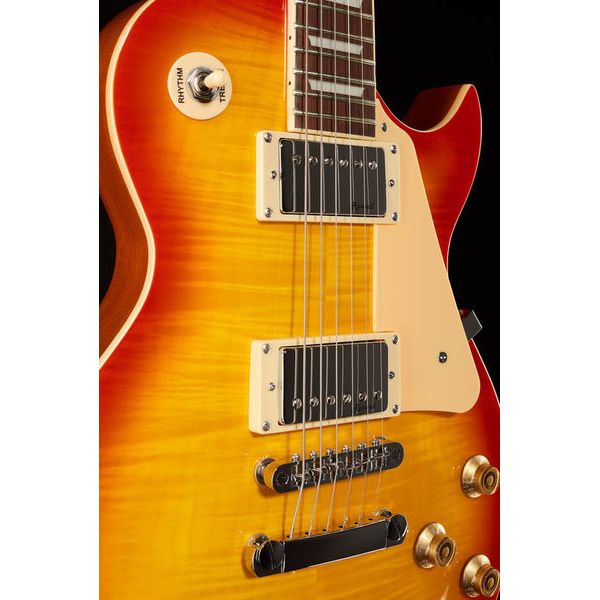
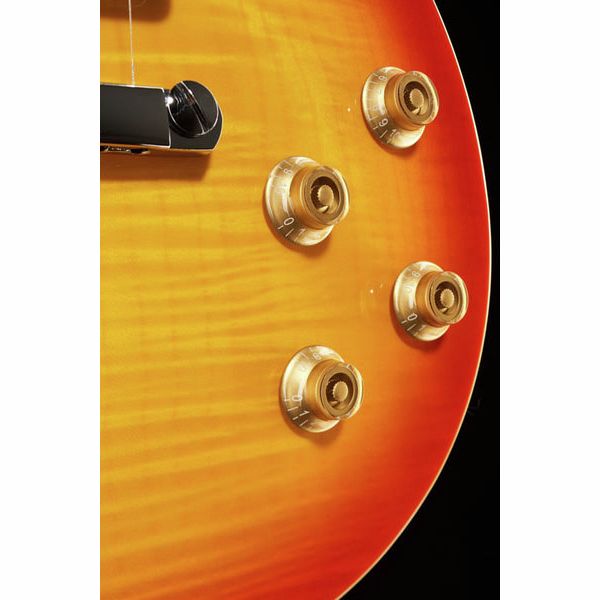
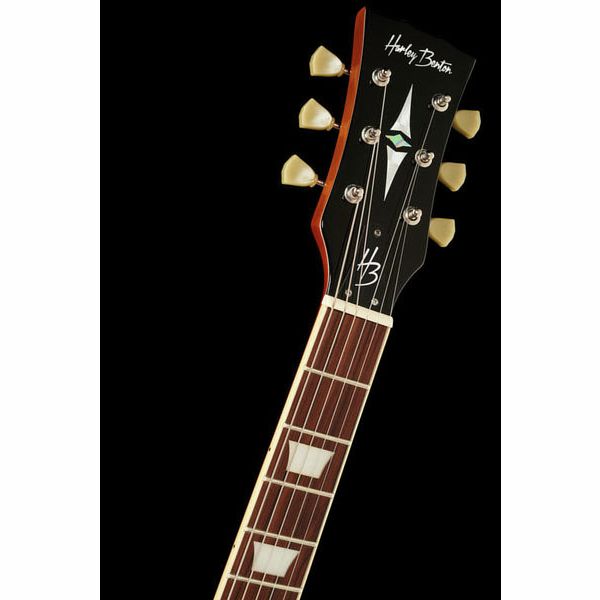
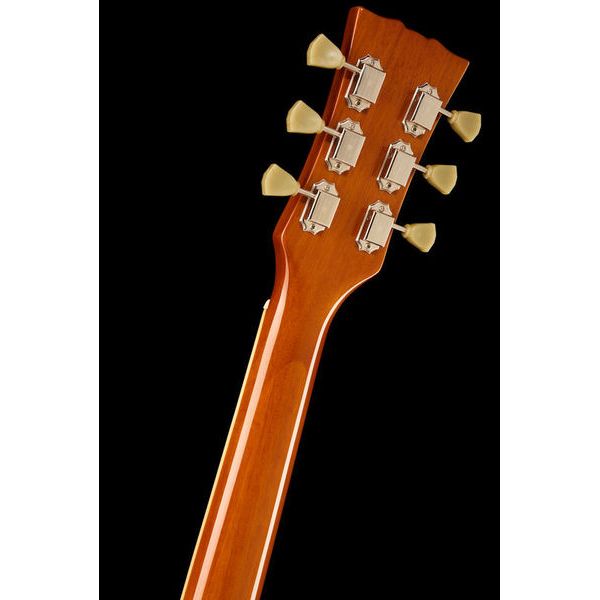


























)

)
)
)